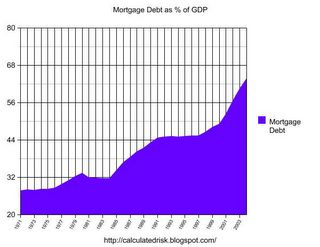The key reports this week are the December employment report and Housing Starts for September and October.
Other key indicators include the November Trade Deficit, November Job Openings, December ISM Manufacturing and December Vehicle Sales.
----- Monday, January 5th -----

Early:
Light vehicle sales for December.
The consensus is for 15.5 million SAAR in December, down from 15.6 million SAAR in November (Seasonally Adjusted Annual Rate).
This graph shows light vehicle sales since the BEA started keeping data in 1967.
The dashed line is the current sales rate.
10:00 AM:
ISM Manufacturing Index for December. The consensus is for 48.3%, up from 48.2%.
----- Tuesday, January 6th -----
No major economic releases scheduled.
----- Wednesday, January 7th -----
7:00 AM ET: The Mortgage Bankers Association (MBA) will release the results for the
mortgage purchase applications index. This will be two weeks of data.
8:15 AM: The
ADP Employment Report for December. This report is for private payrolls only (no government). The consensus is for 50,000, up from -32,000 jobs added in November.

10:00 AM ET:
Job Openings and Labor Turnover Survey for November from the BLS.
This graph shows job openings (black line), hires (dark blue), Layoff, Discharges and other (red column), and Quits (light blue column) from the JOLTS.
Jobs openings increased in October to 7.67 million from 7.66 million in September.
10:00 AM: the
ISM Services Index for December.
----- Thursday, January 8th -----

8:30 AM:
Trade Balance report for November from the Census Bureau.
This graph shows the U.S. trade deficit, with and without petroleum, through the most recent report. The blue line is the total deficit, and the black line is the petroleum deficit, and the red line is the trade deficit ex-petroleum products.
The consensus is the trade deficit to be $59.4 billion. The U.S. trade deficit was at $52.8 billion in September.
8:30 AM: The
initial weekly unemployment claims report will be released. The consensus is for 205K, up from 199K.
----- Friday, January 9th -----

8:30 AM:
Employment Report for December. The consensus is for 55,000 jobs added, and for the unemployment rate to decline to 4.5%.
There were 64,000 jobs added in November, and the unemployment rate was at 4.6%.
This graph shows the jobs added per month since January 2021.

8:30 AM:
Housing Starts for September and October.
This graph shows single and total housing starts since 2000.
10:00 AM:
University of Michigan's Consumer sentiment index (Preliminary for January)
12:00 PM:
Q3 Flow of Funds Accounts of the United States from the Federal Reserve.
 Note: Mortgage rates are from MortgageNewsDaily.com and are for top tier scenarios.
Note: Mortgage rates are from MortgageNewsDaily.com and are for top tier scenarios.





















Recent comments